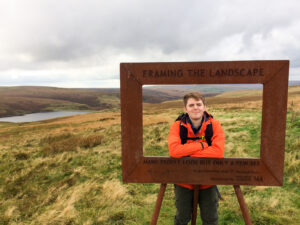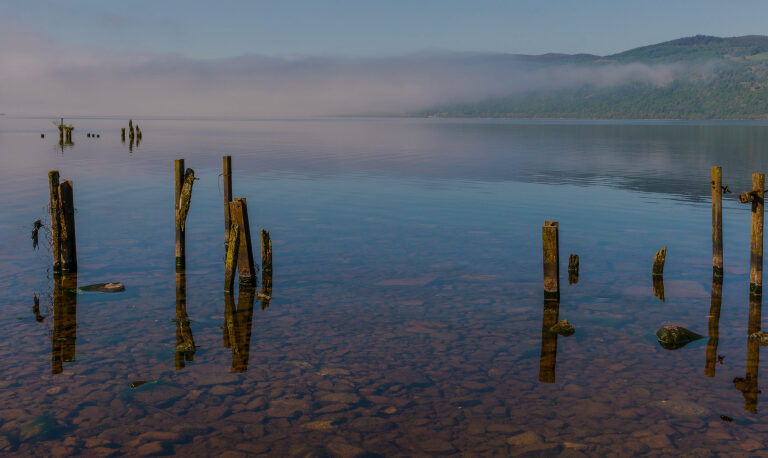Tackling the Pennine Way: Britain’s Classic Walking Trail
Since it opened in 1965, the Pennine Way has gained a reputation as the roughest and possibly the toughest National Trail in the UK.
For many it was the stomping ground of their youth. As they hiked through heather-clad moorlands and peat bogs that became synonymous with the trail, completing the Pennine Way became a rite of passage for those on their ‘Pennine pilgrimage’.

The Original Trail
The launch of the Pennine Way was the first step in the inception of many long-distance walking trails across the UK. Its origins reach further back still to the Kinder Scout walk of the 1930s, which saw workers from the surrounding areas “trespass” on the land to protest against their lack of access to the outdoors.
The entire Way spans 257 miles, beginning in the village of Edale in England’s Peak District (Britain’s first National Park) and ending in Kirk Yetholm in the Scottish Borders. The route travels through three national parks and an area of outstanding natural beauty.
With the wealth of walks that are available today, I set off to hike part of Britain’s original National Trail. I had the chance of tackling the southern section of the trail – the 90 mile stretch from Edale to the Yorkshire village of Horton-in-Ribblesdale.
Roaming the Hills
Setting off from Edale, I encountered my first hill very early on, the famous Kinder Scout.
Standing at over 2,000 ft high, I was richly rewarded with surrounding views of the valley below. Along the plateau, I walked past large weathered stones that are more like discarded clay creations from a giant potting wheel.
The end of the walk is bookmarked by walking up and over one of the famous Yorkshire Three Peaks: Pen-y-ghent. Although it is the smallest of the Three Peaks, standing at around 2,200 ft – descending off Fountains Fell the hill looks far higher and is slightly daunting, but made for a worthy end to my day’s walk.
View this post on Instagram
Ripples of the Past
Along the trail I encountered memories from Britain’s industrial past – towering chimneys that once bellowed the fumes of industry, and revitalised mills that have now found new meaning. The village of Hebden Bridge once had a thriving textile trade with connections to Manchester and Leeds, but today has reinvented itself as the ‘4th funkiest place on the planet’- very avant-garde!
The most well-known literary connection along the Pennine Way is the Brontë Sisters. The charming cobbled town of Haworth is home to the Brontë Parsonage Museum where you can learn more about the famous sisters and the influential novels they produced.
The Way actually passes Top Withens, a ruined farmhouse which is said to have been the inspiration for the location of the Earnshaw family house in the famous book Wuthering Heights. Unfortunately, I didn’t have the courage to ramble past in the style of Kate Bush, but you may!
View this post on Instagram
Taming the Peats
For many, the Pennine Way will conjure scenes of peat bogs that devour limbs, however, these blanket peat bogs are sites of natural beauty that have high ecological value – they are simply misunderstood.
To strike a balance between a better experience for walkers and to protect this fragile vegetation, the solution was the creation of paths along the most arduous sections of bog. They are known as ’causey’ or ‘flag paths’ and were once commonplace along the Pennines some 200 – 300 years ago, as routes for packhorse and traders to travel along.
A number of the slabs are actually reclaimed from mills that were decommissioned and demolished – a memory of the mills on the moor.
View this post on Instagram
The Marvels of Malham
One of my favourite sections of the walk was arriving into the Yorkshire village of Malham, where green rolling fields guide you into an area which is blessed with dramatic limestone scenery.
The titan of Malham Cove is a 230 ft curving cliff made of white limestone – an impressive sight which was formed by glaciers carving the landscape thousands of years ago. The famous limestone pavements on top are home to a unique microclimate of rare flowers which The Way actually crosses, and the rockface itself hosts a pair of Peregrine Falcons.
The surrounding area is a prime example of the power of the elements.
A short walk out of Malham is Gordale Scar – a huge gorge that was created during the Ice Age. I will never forget standing in the palm of the gorge listening to the waterfall rushing past, a wonderful moment of tranquillity.
On the return from Gordale Scar, the trail follows Gordale Beck back to Malham, passing Janet’s Foss (the word “foss” is from the old Norse for waterfall) – a picturesque waterfall that lends itself to tales of fairies very easily.
While you will pass Malham Cove on your last day, the sites of Gordale Scar and Janets Foss will require a short excursion from Malham, so arriving into the village early is advisable.
View this post on Instagram
Walking the Pennine Way
The Pennine Way is an iconic route that will challenge and inspire every walker. We will be launching the remaining 178 miles of the Pennine Way in 2019, so why not get a head start on the first 90 miles and discover Britain’s classic long-distance walking trail?
Jason Martin


